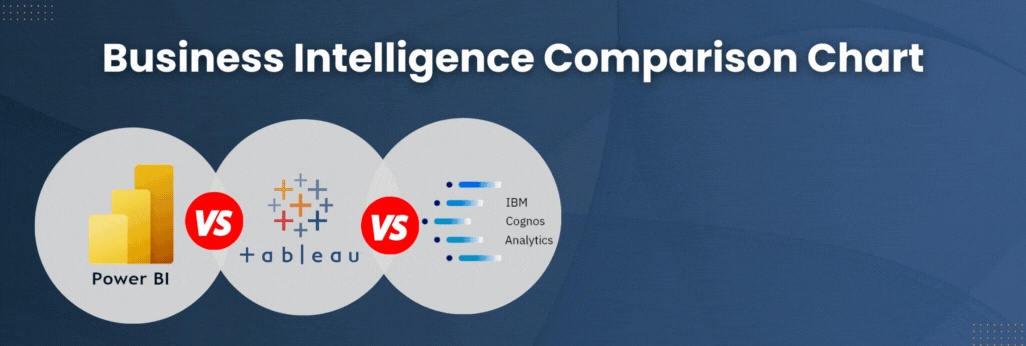Gartner released the highly anticipated 2020 version of its Magic Quadrant for Analytics and Business Intelligence Platforms. We recap the report, looking at changes, what the future holds and, most important, where to focus and why as the BI and analytics space continues to evolve.
Gartner lists commodities, must haves and highest ranking tools
This year’s Gartner report continued the trend from previous years. Visualization capabilities are now considered a commodity and key differentiators are augmented features. Must-haves are cloud support, machine learning, artificial intelligence (AI) and natural language query capabilities.
Also, data prep, data security and data governance remain key to the success of most BI projects. Even though modern BI tools may allow power users to manage and create their own data, this capability needs to be managed. Repeatable and verified steps for data prep, data governance and data security need to be put in place. This “single source of the truth” approach prevents an explosion of non-vetted data islands. Leaders in the top right quadrant of the 2019 matrix are the ones that support this full spectrum of business intelligence: data preparation, data governance and security all the way to data presentation and insight generation.
What changed since Gartner’s 2019 report?
The overall graph showed the entire pack moving up and to the right. The top right (Leader) quadrant once again included Tableau, Microsoft, Qlik and ThoughtSpot. Tableau and Microsoft showed slight improvements and the gap between them narrowed. There were a couple of new additions to the Niche Players quadrant, notably Dundas and Alibaba Cloud. Oracle and Yellowfin both joined the Visionaries quadrant, with Oracle making a positive move in both “Ability to Execute” and “Completeness of Vision.” IBM Cognos also made a significant jump up in its “Ability to Execute.”
BI reporting: what’s old is new again
It seems business intelligence reporting has really made a full circle. In the early days, it was all about enterprise level (pixel perfect) reporting. Then self-service became all the rage and modern BI tools brought ad-hoc reporting capabilities to the masses. Now, customers are looking for tools that provide both pixel-perfect burst reporting and ad-hoc reporting for surfacing insights.
The future satires and the Salesforce acquisition of Tableau
It is anticipated that stories will become the main consumption avenue for data and many of these stories will be auto-generated by AI/machine learning algorithms. It will be interesting to see what next year’s report will show with respect to the recent acquisition of Tableau by Salesforce. This year, Salesforce and Tableau were ranked separately, and both did well. Salesforce showed up as a solid Visionary and Tableau as a Leader. Although change promotes uncertainty, once these products become integrated, they will surely be a force to be reckoned with.
Bottom line: few surprises overall
The 2020 Gartner report on analytics and BI showed few surprises. Most companies are looking for more enterprise-ready tools with built-in security, governance and flexibility of deployment. And even though new augmented features such as AI/machine learning and natural language query are highly desired, the actual use of these features is projected to be low, even going into 2022.
Factors to success in analytics remain the same
The data space has evolved rapidly over the past 20 years, going from decision support to data warehousing to BI to analytics and now modern analytics and business intelligence platforms (ABI). Although a lot of fancy augmented features are getting attention now, we feel the factors that determine the success of BI projects remain the same:
- Reliability of the data
- Ease of use
- Flexibility of deployment
- Availability of data sources
- Tool popularity and customer satisfaction
Of the above success factors, reliability and availability of the data can be the hardest nut to crack. While some analysts are skilled at joining, scrubbing and loading data, this process is not always an intuitive.
At Senturus, we are highly skilled at getting our customers the right data in the right format. Plus, we are tool agnostic – we’re not tied to any one vendor and can knowledgably and objectively advise on the pros and cons of multiple platforms. We have people skilled in every layer of the business intelligence stack and offer training, consulting and mentoring in Tableau, Power BI and Cognos. If you have questions about which platform is best for you, if you even need to migrate to a new platform or want better reporting efficiency and reliability, contact us!
Comparing Power BI, Tableau and Cognos
If you are interested in learning more on how features compare across Tableau, Power BI and Cognos, check out our free resources:
Data Modeling Comparison: Tableau, Cognos and Power BI
Enterprise Security: Tableau vs. Power BI
Dashboarding Comparison: Power BI, Tableau and Cognos
Comparing AI Features in Power BI, Tableau and Cognos



